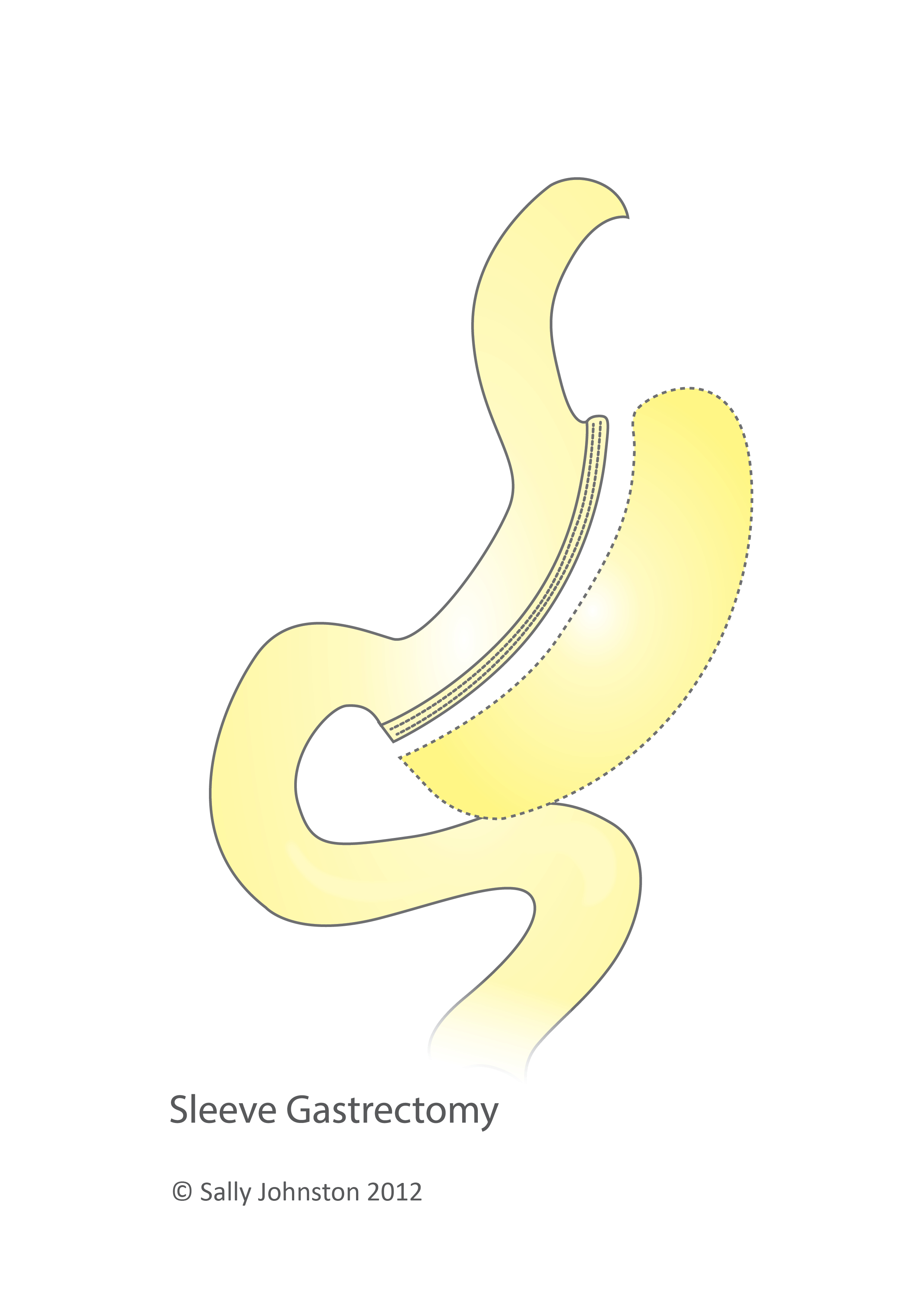How does a sleeve gastrectomy work?

Sleeve gastrectomy surgery reduces the size of the stomach by stapling along its length to form a long tube that looks similar to a banana. The majority of the stomach is then removed and discarded. The new banana shaped stomach is long and thin hence is often referred to as a ‘sleeve’.
About 80-90% of the stomach is removed making it much smaller, hence it holds much less food than it did previously. This smaller stomach helps you feel satisfied after eating a small amount of food. In addition, the part of the stomach that is removed is the part that secretes much of the hormone called ghrelin, which is involved in stimulating appetite. It is thought that producing less ghrelin further helps to reduce hunger after surgery. Although ghrelin levels start to rise again after surgery, they don’t seem to return to their previous levels and so hunger is more easily satisfied.
Unlike the adjustable gastric band the sleeve gastrectomy is not reversible. The stomach may stretch, or adapt to fit a little more food, but it cannot grow back. A sleeve gastrectomy therefore is a commitment for life.
As you will be eating less after sleeve gastrectomy, making the most of your food choices is important to help you obtain all the nutrients required for good health.
Following a sleeve gastrectomy most people will lose most of their excess weight in the first year. After this time weight loss often stabilises, so make the most of this period by making good food choices and regular physical activity a habit for life. After the first year, your ongoing success will depend on your efforts to change your lifestyle and maintain these habits in the long term.
Whilst the size of the stomach changes after surgery, the type of foods that can be eaten does not. Choosing high-energy (calorie or kilojoule) foods regularly will hinder your progress. As with other types of weight loss surgery, snacking or grazing, lack of physical activity and poor food choices can lead to weight regain. Positive, lifelong changes to eating and physical activity will ensure your long-term success.
Poor food choices can also cause dumping syndrome. Dumping syndrome had been thought to occur only following gastric bypass surgery, however it has been seen following sleeve gastrectomy surgery. Avoiding fatty or sugary foods will help prevent dumping syndrome. We will discuss dumping syndrome in a coming edition of the newsletter, but for now you can see a simple explanation here. Avoiding fatty or sugary foods will help prevent dumping syndrome.
A 2011 study found that those who had regular follow up after sleeve gastrectomy achieved better weight loss, health improvement, quality of life and food tolerance, than those who did not. Your support team is there to guide you to acheive the best results following surgery, so make the most of the team and keep in touch! They have all sorts of hints and tips to help you achieve success on your weight loss journey.

swimbikerun 1,039
Posted
Great comments Sally,
I think the other item I would add is that drinking also makes a difference. I don't drink anything but Water, Powerade Zero, or other zero calorie drinks. I can manage an ounce or so of milk in coffee but its got to be a good amount of coffee and drank over a 10-15 min period or so.
Share this comment
Link to comment
Share on other sites